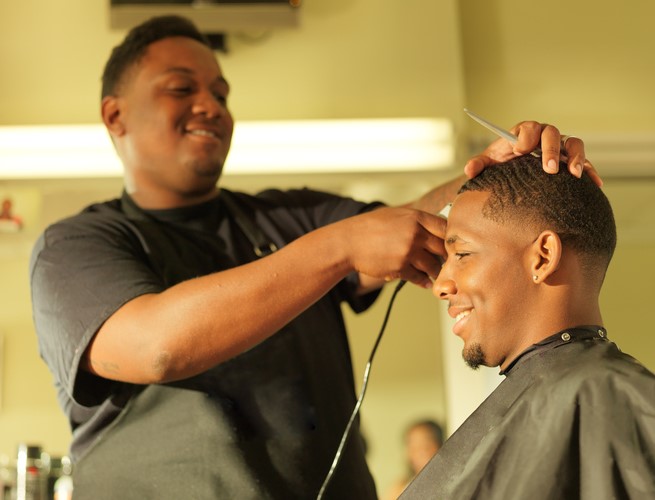BOURSESSENEGAL – A receding hairline is a common concern for many individuals, especially as they age. This gradual loss of hair can affect both men and women, leading to feelings of insecurity and self-consciousness. In this comprehensive guide, we will delve into the causes of a receding hairline, explore various treatment options, and discuss preventive measures to maintain healthy hair.
What is a Receding Hairline?
Defining the Condition
A receding hairline refers to the gradual retreat of the hairline on the forehead, often leading to a more pronounced appearance of the forehead. This condition typically manifests in patterns, starting from the temples and moving backward. While it is more common in men, women can also experience this phenomenon, especially during hormonal changes.
Recognizing the Signs
The initial signs of a receding hairline can vary among individuals. Some may notice thinning hair along the temples, while others may see a more pronounced peak in the hairline. Over time, this can lead to bald patches or an overall decrease in hair density.
Causes of a Receding Hairline
Genetic Factors
One of the primary causes of a receding hairline is genetics. If you have family members who experienced hair loss, you may be more likely to face the same issue. This hereditary pattern is known as androgenetic alopecia.
Hormonal Changes
Hormonal changes play a significant role in hair loss. For men, dihydrotestosterone (DHT) is a key hormone linked to hair thinning. In women, hormonal fluctuations during pregnancy, menopause, or the menstrual cycle can contribute to hair loss.
Age
As people age, hair follicles can shrink, leading to thinner hair and eventual loss. This natural aging process affects everyone differently, resulting in varying patterns and degrees of hair loss.
Stress and Lifestyle Factors
High-stress levels and unhealthy lifestyle choices can also impact hair health. Stress can trigger a condition called telogen effluvium, where hair follicles prematurely enter the shedding phase. Poor nutrition, lack of sleep, and smoking can further exacerbate hair loss.
Treatment Options for a Receding Hairline
Over-the-Counter Solutions
For those looking to address a receding hairline, several over-the-counter treatments can help. Products containing minoxidil, such as Rogaine, promote hair growth and can slow the progression of hair loss. Applying minoxidil directly to the scalp may help stimulate dormant hair follicles.
Prescription Medications
If over-the-counter options prove ineffective, consider consulting a healthcare professional about prescription medications. Finasteride, for instance, is an oral medication that inhibits the production of DHT, potentially slowing hair loss and promoting regrowth.
Hair Transplant Surgery
For those with significant hair loss, hair transplant surgery may be a viable option. This procedure involves taking hair follicles from a donor site on the scalp and transplanting them to areas experiencing thinning or baldness. The results can be permanent and yield a natural appearance.
Platelet-Rich Plasma (PRP) Therapy
PRP therapy has gained popularity in recent years as a treatment for hair loss. This procedure involves drawing a small amount of blood from the patient, processing it to concentrate the platelets, and injecting it into the scalp. The growth factors in the platelets may stimulate hair follicles and promote new growth.
Lifestyle Changes
Making positive lifestyle changes can also play a crucial role in managing a receding hairline. Prioritize a balanced diet rich in vitamins and minerals, particularly those known to promote hair health, such as biotin, zinc, and vitamins A, C, and E. Regular exercise, adequate sleep, and stress management techniques can also contribute to overall well-being and hair health.
Preventive Measures for Hair Loss
Maintaining Scalp Health
Keeping your scalp healthy is essential for preventing a receding hairline. Regularly cleanse your scalp to remove dirt and excess oil. Consider using gentle, sulfate-free shampoos that won’t strip your hair of its natural oils.
Avoiding Harsh Treatments
Avoiding harsh chemical treatments, excessive heat styling, and tight hairstyles can help protect your hair. Opt for gentle styling methods and avoid pulling on the hair, which can lead to traction alopecia.
Regular Haircuts
Regular trims can promote healthier hair by removing split ends and allowing new growth. Consulting with a professional hairstylist can help you choose styles that complement a receding hairline.
Managing Stress
Incorporating stress management techniques, such as yoga, meditation, or deep-breathing exercises, can help alleviate stress and its impact on hair health. Make time for activities that relax and rejuvenate you.
When to Seek Professional Help
If you notice a sudden increase in hair loss or have concerns about a receding hairline, consult a healthcare professional or dermatologist. They can assess your situation, identify underlying causes, and recommend appropriate treatments tailored to your needs.
Conclusion: Embracing Change
A receding hairline can be a challenging experience, but understanding the causes and available treatments can empower you to take control of your hair health. Whether you choose over-the-counter solutions, prescription medications, or lifestyle changes, taking action can help you manage your hair loss effectively.
Remember that hair loss is a common issue faced by many individuals. Embracing your unique journey and making informed decisions can lead to a healthier, more confident you. Don’t hesitate to seek professional advice if needed, as this can guide you toward the best solutions for your specific situation. Embrace the changes, and let your personality shine through, with or without a full head of hair!
REFERENCE : https://www.cdcfoundation.org/



